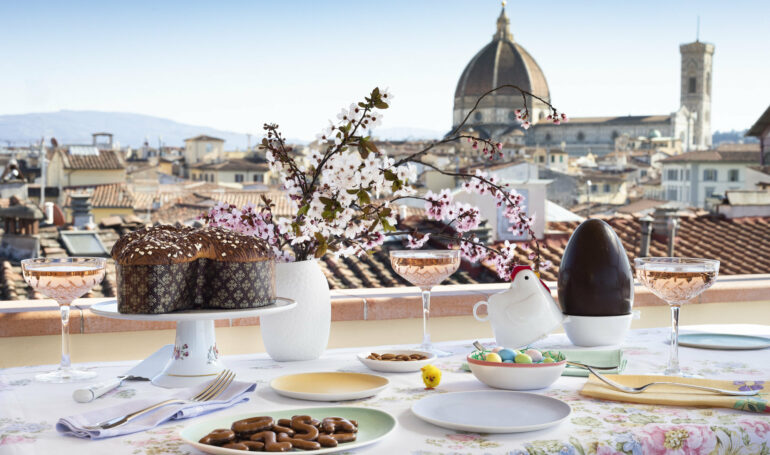
Easter in Italy
Easter in Italy is one of the most important holidays of the year, second only to Christmas. Easter in Italy marks the beginning of the warm weather, enjoying outdoor dining, outdoor activities such as walks in the parks, and taking the children to playgrounds. Some events organized during this most beautiful period include folk festivals, village celebrations, concerts, religious rites, and processions.
Easter is one of the most important Christian holidays in the liturgical calendar. Easter celebrates the resurrection of Jesus Christ after his death on the cross. According to Christian tradition, Jesus’ resurrection demonstrates God’s power over death, thus ensuring eternal life for those who believe in Him. Easter is also a symbol of hope and rebirth. Italy does not take Easter lightly.
The Days Leading up to Easter
The lunar cycle determines the date of Easter, and changes every year. Easter celebrations begin the previous Sunday, known as Palm Sunday, to commemorate Jesus’ triumphal entry into Jerusalem, welcomed by the waving of palm leaves. On this day in Italy, it is not uncommon to see families and children returning home from church with blessed olive branches, due to the lack of palm trees in Italy. Thus begins the Holy Week during, which various rituals take place.
Holy Thursday
Holy Thursday commemorates the recurrence of the Last Supper and the Eucharistic celebration. Thousands of reenactments of the Passion of Christ take place all over Italy on Thursday night, as well as reenactments of Jesus washing his disciples’ feet. Many churches reenact this scene, as well as the Last Supper, on Thursday prior to Easter.
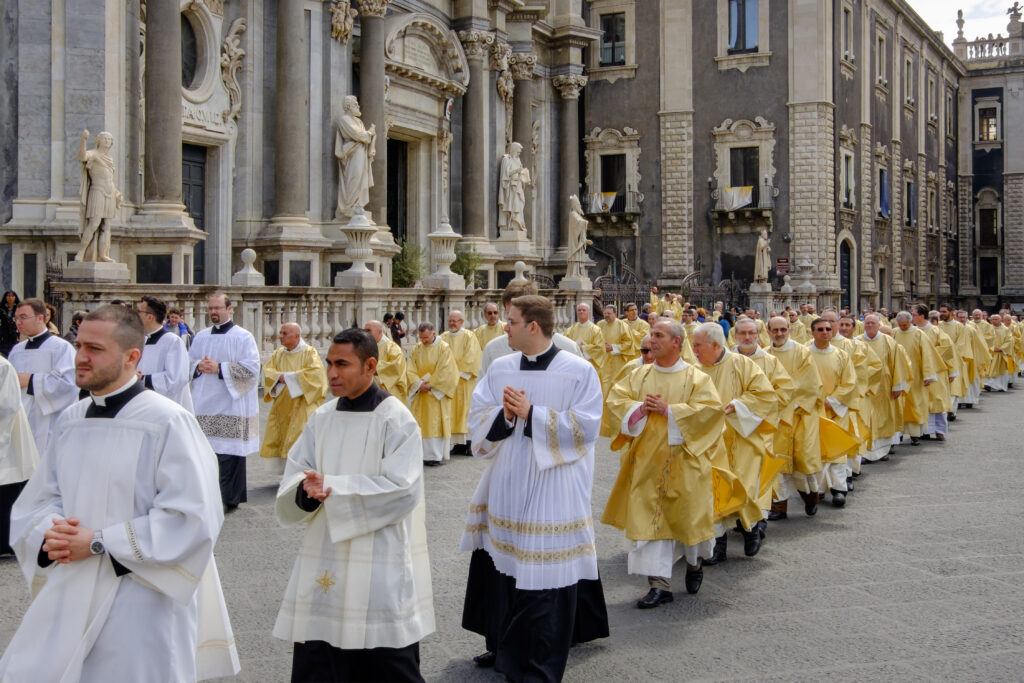
Good Friday
Good Friday is the day of the Via Crucis. The Way to the Cross is the 14-step Catholic devotion commemorating Jesus Christ’s last day on Earth as a man. Most towns in Italy celebrate a processional pilgrimage and reenactment that ends at the town’s Calvary. First, torches light up the streets, followed by processions that retrace the trial, ordeal, and death of Jesus. Jesus Christ, according to Christian tradition, died on the cross in Jerusalem on Good Friday, and his was body placed in a tomb dug out of the rock. The tomb closed with a large stone, was under the surveillance of Roman soldiers.
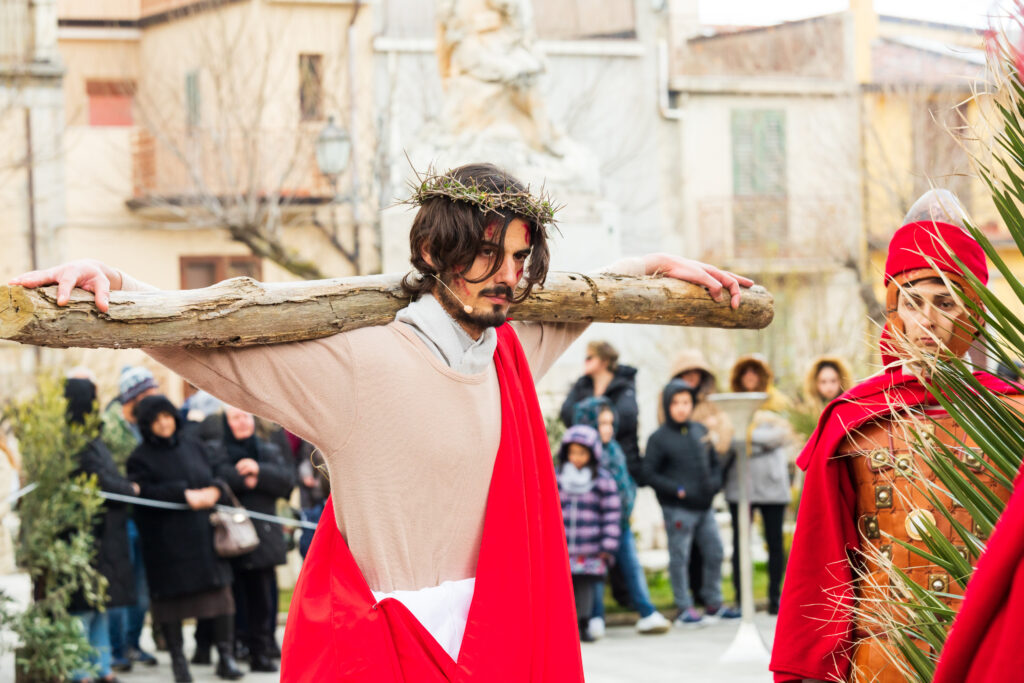
Easter Sunday
On Saturday at midnight the bells announce the Resurrection. Three days after Holy Friday, early in the morning, a group of women who went to the tomb to anoint Jesus’ body found the tomb empty. The angel of the Lord appeared to them and told them that Christ had risen from the dead. The women left the tomb with great joy and announced the good news to the apostles.
Christ’s resurrection is the basis of the Christian faith, demonstrates God’s power over death, and grants eternal life to those who believe in Him.
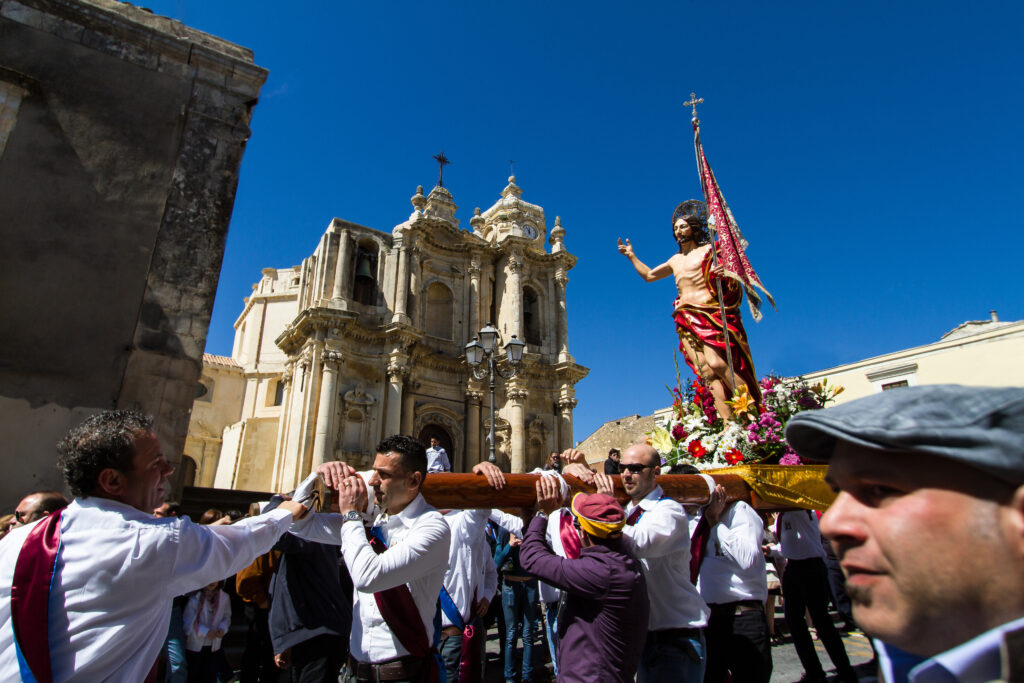
Italian Easter Traditions
The Easter Dove
In Italy, the Colomba di Pasqua is a typical sweet that resembles the dove that flies in circles of peace. The Colomba is the Easter version of the Christmas Panettone, often prepared with raisins, candied orange peel, and an almond glaze.
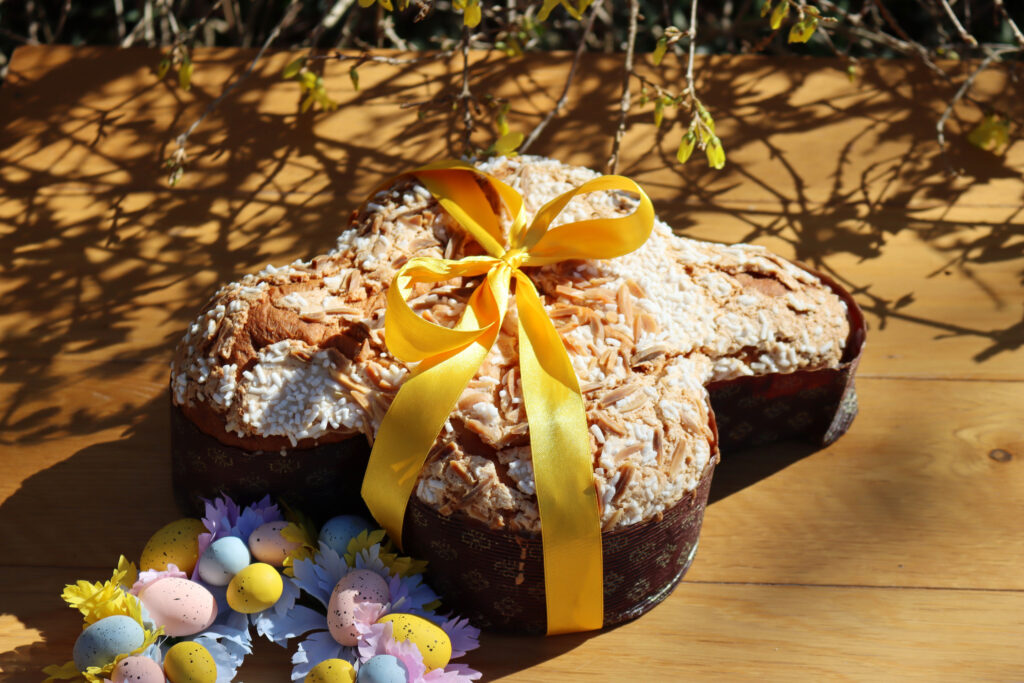
The Easter Egg
L’uovo di Pasqua is another popular tradition, where eggs are painted or decorated for gifting or playing with. In many parts of Italy, the Easter egg is a gift from godparents to their godchildren. The egg, a symbol of life and hope for fertility, is linked to the meaning of Easter as a celebration of spring and the awakening of nature. Enjoying a chocolate egg on Easter is a must for every child and adult!
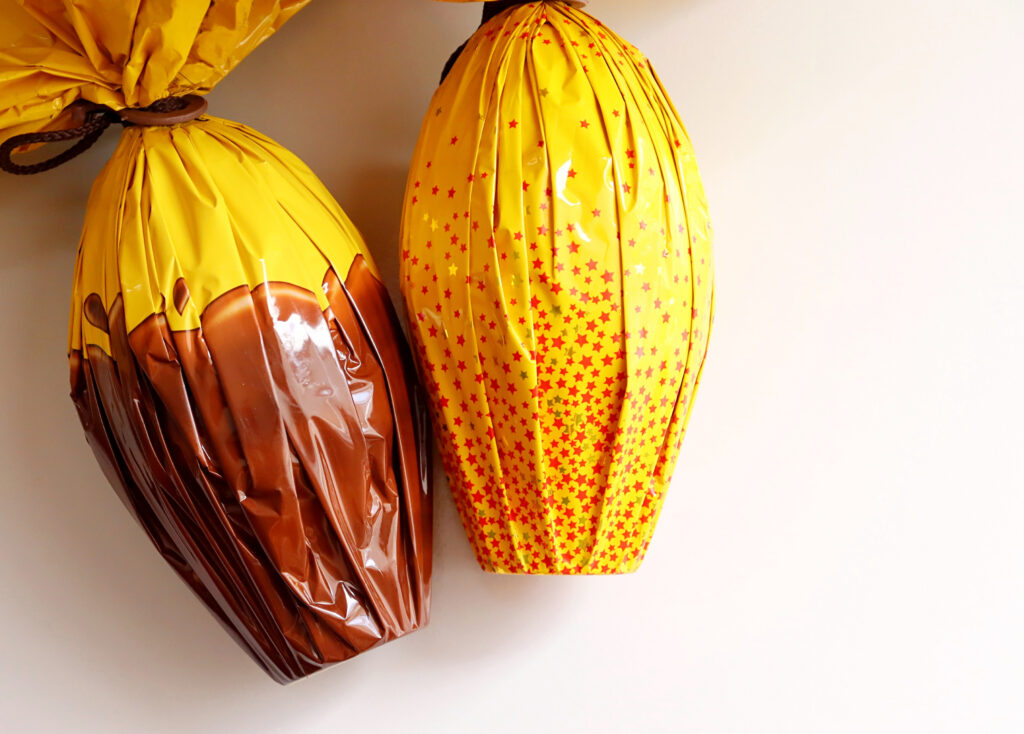
Easter Monday / La Pasquetta
Easter Monday, the day after Easter, is a trendy Italian holiday and tradition. The Monday after Easter is called “La Pasquetta” or “Small Easter.” This day is reserved for picnics in the mountains, open-air markets, and overall causes to celebrate with more food and friends. While the days leading to Easter can be somber and subdued, and Easter Sunday is for family, La Pasquetta is a joyous day mainly dedicated to friends and get-togethers.
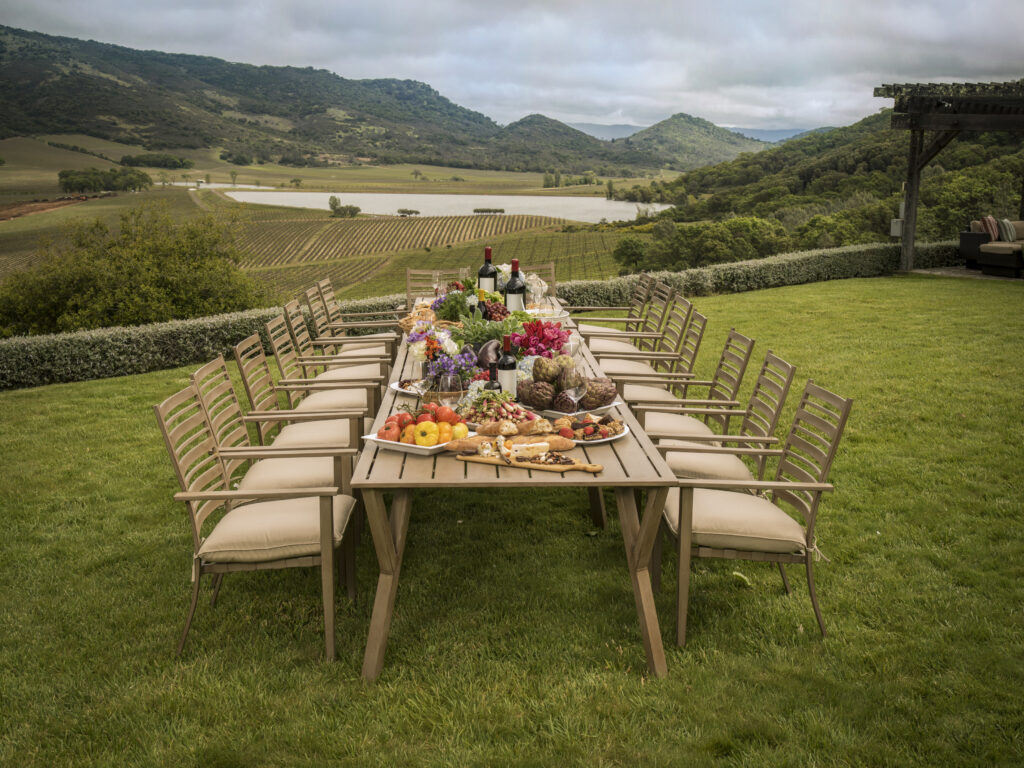
The Blessing of the Easter Meal
In many cultures, Italy is one of them; Easter is celebrated with the blessing of the Easter meal. The blessed food can include meats, especially lamb, which is the meat of choice in Italy for Easter Sunday, hams, bread, egg dishes, and many more. The blessing of the Easter meal is a sacred tradition that holds a special place in the life of many Christian communities.
Easter Superstitions
This being an article on Easter in Italy, some superstitions are also worth mentioning. For example, make sure your table has a red colored egg, which represents hope for good luck. But breaking the egg with a knife instead of your hands is a sign of bad luck. Also, shaving one’s beard or cutting one’s hair on Easter is not advisable, as this could lead to a severe headache! And don’t think about cutting your toenails! The devil would delight in this most distasteful act on Easter Sunday! Please leave it to the Italians! Also, remember to enjoy eggs and dishes containing eggs. They represent fertility and good luck!
Easter Celebrations Around Italy
Florence
The explosion of the cart is one of the events not to be missed for Easter in Florence! A pyrotechnic tower is pulled by two pairs of oxen positioned between the city’s symbolic places: the Baptistery of San Giovanni and the Cathedral.
It occurs at 11:00 AM every Easter Sunday. After the Historical Procession of the Florentine Republic, the fuse of a mechanical dove, or Colombina as they say in Florence, is set on fire from the main altar of the Cathedral and sets fire to the fireworks positioned on the cart, starting the traditional show. So if you ever have the opportunity to visit Florence at Easter time, it’s not to be missed.
Bormio
Where to go at Easter in Lombardy? Easy, in Bormio, in the heart of the Lombardy Alps. Here, one of the most ancient Easter traditions of the peninsula takes place. The Pasquali di Bormio is a competition between the city’s districts, to the sound of imposing allegorical floats that parade along the long Via Roma up to the main square.
In ancient times, it was not floats that paraded but five lambs festively decorated by the residents of each of the five historic districts of Bormio. The lambs are blessed in the church of Saints Gervasio and Protasio. The tradition has evolved over the decades to become a spectacular parade of floats that attracts thousands of tourists and visitors to Bormio every year for Easter. As a result, the Pasquali di Bormio is probably one of Italy’s largest Easter celebrations.
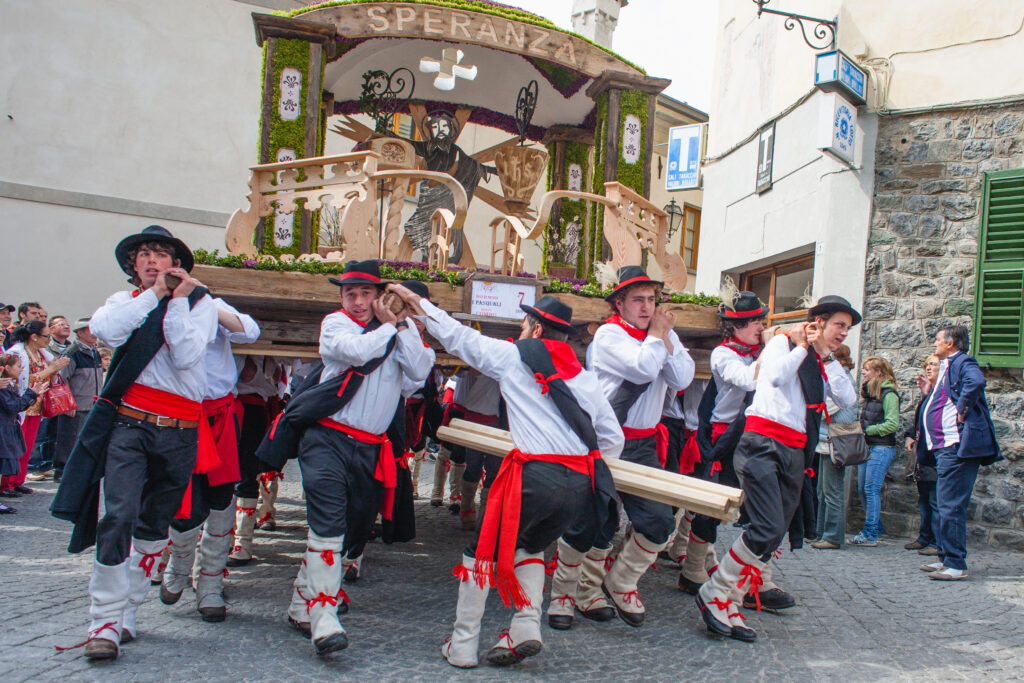
Trapani
Those aiming to spend Easter in Sicily cannot miss the Procession of the Mysteries of Trapani. This is a tradition that has been going on for 400 years now. Eighteen sculptural groups and two images made of wood, canvas, and glue by the Trapani artisan shops between the 17th and 18th centuries are carried in procession for 24 hours through the streets of Trapani.
The event begins at 2:00 PM on Good Friday in front of the church of the Souls in Purgatory. They represent the passion and death of Christ. The procession moves through the historic center of Trapani for the following 24 hours, stopping at the city’s fishing port during the night. This is one of the most evocative moments of the event. From there, at dawn, the processions gather to return to the Baroque church amidst music and festivities.
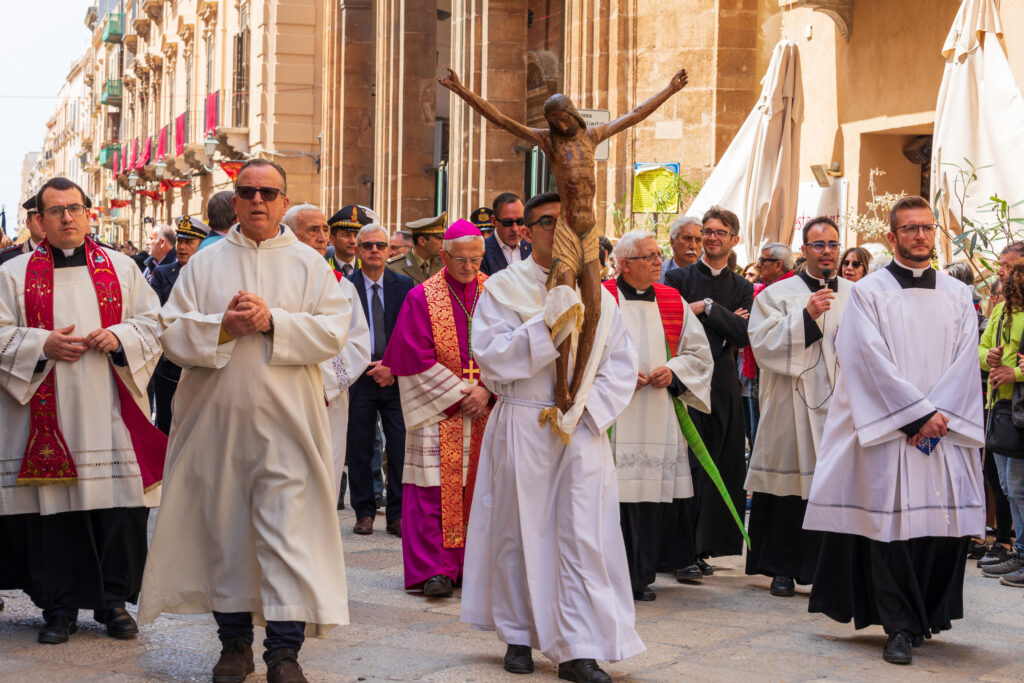
Modica
Another Sicilian tradition or celebration is the “Madonna Vasa Vasa.” Vasa means kiss in the Sicilian dialect. On Easter Sunday in the town of Modica, there are two processions. One with the statue of the Risen Christ, and the other with the Virgin Mary, clad in back and in mourning for the loss of her Son. Men carry the statues around the town’s main streets until they meet. The Virgin is so content to see her Son rise from the dead that she throws off her black robe to reveal a celestial blue cloak and a red dress underneath. As she leans forward, she gives two kisses on Jesus’ cheeks. Then spectators hear the sound of a band, church bells, and fireworks in celebration.
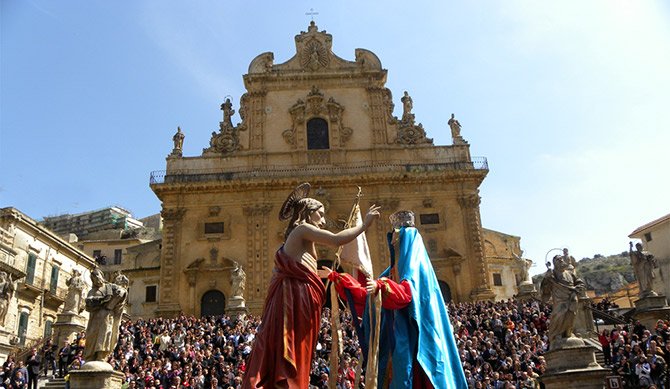
Rome
Thousands of people will spend the Easter period in Rome to attend one of the most important events in Italy, the Via Crucis at the Colosseum. Celebrated for the first time in 1750 at the behest of Pope Benedict XIV. Guided by the Pontiff, the itinerary of the Via Crucis follows the 14 stages of Jesus’ journey towards the Mount of Calvary. From the condemnation of Pilate to the crucifixion, concluding with his death, and the deposition from the Cross to the crypt, where Jesus is said to have been buried. Each year, the Pope chooses a general theme that is represented in the various stations of the Via Crucis.
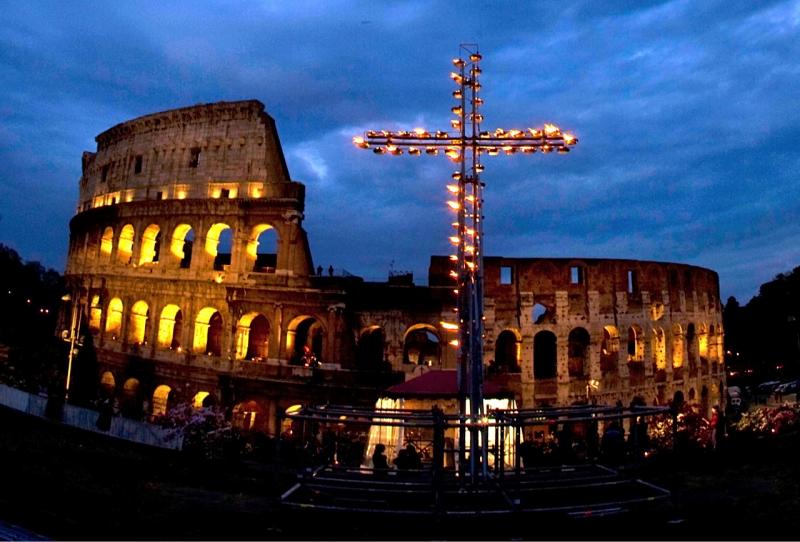
As you can see, Easter in Italy is a beautiful time of year with much symbolism, tradition, and celebration. However, if you happen to be traveling to Italy during Easter time, remember that it will be crowded.
Comments are closed.

What to Pack for Italy
Cosa Mettere in Valigia per l'Italia
Everyone is always asking me what they should pack for Italy,
so I’ve created a quick reference guide that you can use for your next trip.
Hint: You don’t need nearly as much as you think you do!

One Comment
I love that so many of the people come out in worship and celebration of our Lord and Savior! Bellissimo! Bravo!